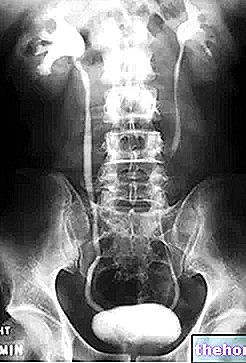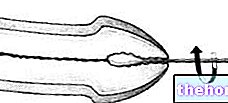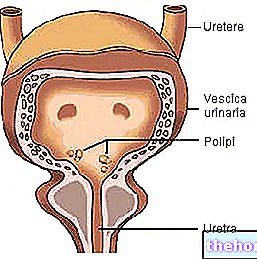What is Acute Pyelonephritis
Acute pyelonephritis is a "localized inflammation, which affects the mucous membrane of the renal pelvis (or renal pelvis) and the kidney; it is often caused by the spread of an" infection caused by pathogens belonging to the intestinal bacterial flora, which can reach the kidney through three ways: ascending from the bladder (the most common), haematic from the blood and lymphatic from the lymph.

Symptoms indicative of acute inflammation are high fever, chills, lumbar pain, dysuria and kidney involvement on physical examination.
The infection causes an inflammatory process in the kidney, of a suppurative nature, with the formation of small abscesses distributed in the affected organ.
Pyelonephritis has a benign evolution: if adequate treatment is used, the symptoms tend to subside in about two weeks. In the case of concomitant urinary anomalies, the infection can prove particularly resistant to treatment and, at times, there can be an evolution into the chronic form of the disease.
Incidence
Pyelonephritis can affect people of any sex and age, but there is a higher incidence in women and children, for the following reasons:
- Women: they have a shorter urethra than men and, during pregnancy, the uterus can compress the excretory passages even more. Other factors, which make the female sex more exposed, can be hormonal changes and urethral trauma during sexual intercourse.
- Children: they present with greater frequency the phenomenon of vesico-ureteral reflux.
Causes and risk factors
The cause of acute pyelonephritis is often to be found in a urinary tract infection, which can be ascertained and diagnosed by performing a urine culture.
The presence of bacteria in the urine (they are sterile, generally, in the healthy subject) in a significantly high number, makes evident the presence of an "infection, which can materialize precisely in the" onset of pyelonephritis. Most cases of pyelonephritis are due to intestinal microorganisms entering the urinary tract, such as Escherichia coli (in 70-80% of cases) ed Enterococcus faecalis. Nosocomial (hospital-acquired) infections can be due to coliform bacteria and enterococci, as well as other less common organisms (e.g. Pseudomonas aeruginosa and various species of Klebsiella). Most cases of pyelonephritis begin as lower urinary tract infections, especially cystitis and prostatitis. L"Escherichia coli can invade the "umbrella" cells of the bladder (so defined as each of them covers more cells of the intermediate layer) to form intracellular bacterial communities, which can mature into biofilms (complex aggregation of microorganisms characterized by the secretion of an anchoring matrix ); the latter are resistant to antibiotic therapy and immune system responses, so much so that they represent a possible explanation for recurrent urinary tract infections, including pyelonephritis.
There are several factors that predispose to pyelonephritis:
- Anatomical-functional alterations, which can cause obstruction of the urinary flow or facilitate the entry into the bladder of pathogens:
- structural defects of the urinary tract, such as some congenital malformations;
- shorter urethra in women: it favors the colonization of the urinary tract by intestinal microorganisms, for their access to the vaginal vestibule. Similarly, sexual intercourse facilitates the entry of pathogens into the urethra in women;
- tumors, strictures, kidney stones, prostatic hypertrophy;
- neurological damage to the bladder and sphincters (spina bifida, multiple sclerosis).
- Incomplete bladder emptying.
- Catheterization.
- Various predisposing diseases: metabolic diseases (Diabetes Mellitus, hyperuricemia), immunosuppression, neurological diseases, etc.
- Pregnancy is a condition that makes you susceptible to acute pyelonephritis due to the increased production of estrogen (dilation of the ureters, pelvis and bladder) and the enlargement of the uterus (compression on the ureters and bladder with stagnation of urine).
Vesicoureteral reflux (reflux of urine from the bladder towards the ureter and, sometimes, towards the renal parenchyma) and incomplete emptying of the bladder favor an ascending infection that reaches the kidney.
During the insertion of a catheter, bacteria can be transported into the bladder by the intraluminal route or through contact with the external surface. Also ureteral stents (small tube inserted into the ureter to prevent or resolve the obstruction of urine flow from the kidney) or drainage procedures (for example: nephrostomy) can increase the risk of developing pyelonephritis.
Symptoms
The onset of the disease is usually rapid, with symptoms developing rapidly over a few hours or after a day. Pyelonephritis can cause malaise, nausea, vomiting, painful urination, and abdominal pain, unilateral or bilateral, radiating down the side to the back.
The onset of fever is variable, but usually its onset causes violent chills and is associated with poor general health (fatigue, weakness, anorexia, etc.).
Pyelonephritis is often associated with symptoms of lower urinary tract infection, such as frequent urination, haematuria (the urine may have blood), or dysuria (difficulty passing urine, not necessarily accompanied by pain). essential to confirm the diagnosis of infection. The urine is cloudy due to the presence of cells (pyuria) or bacteria (bacteriuria).
The patient with acute pyelonephritis commonly presents low back pain (in one or both kidneys), which occurs suddenly and can have a variable intensity (usually moderate, the patient complains of sensitivity of the kidney to palpation, during diagnosis).
Other articles on "Acute Pyelonephritis"
- Pyelonephritis
- Pyelonephritis Diagnosis
- Management of acute pyelonephritis: therapy, course and complications
- Preventing Pyelonephritis
- Chronic Pyelonephritis: Causes, Symptoms and Diagnosis
- Chronic pyelonephritis therapy
- Pyelonephritis - Medicines for the treatment of Pyelonephritis




























